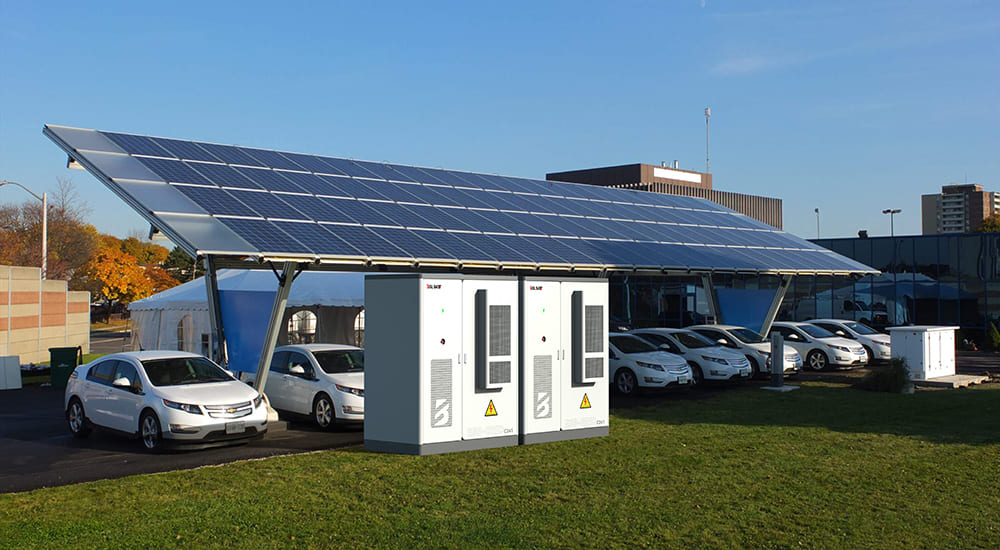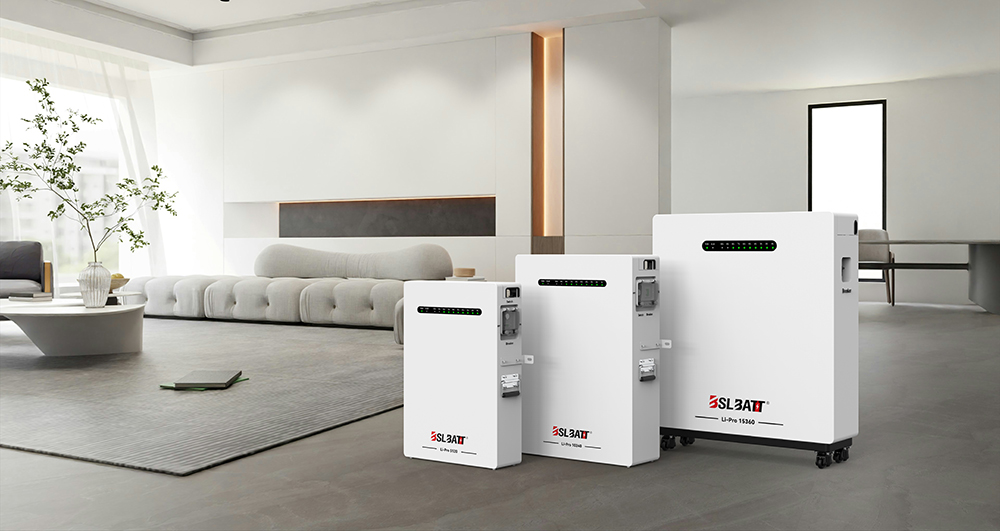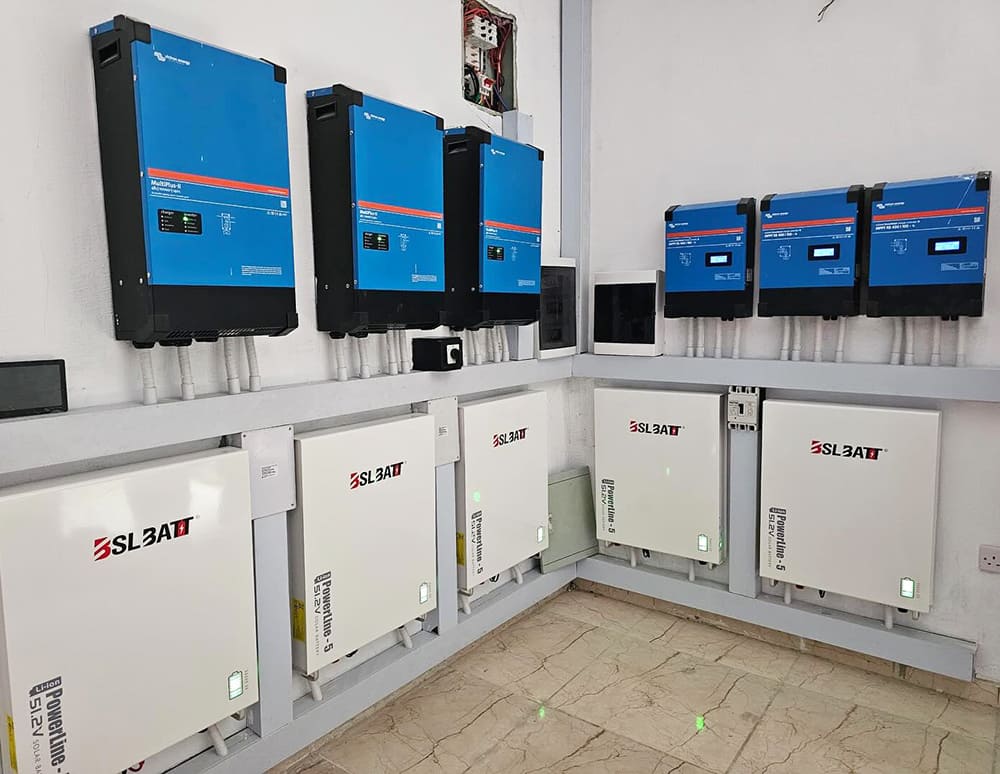When it comes to energy storage, I often see two main categories: C&l energy storage and residential energy storage. These systems serve different purposes, and understanding their distinctions is crucial. Let me break it down for you:
| Type of Energy Storage | Definition and Characteristics |
|---|---|
| C&l Energy Storage | Large-scale energy storage capacity, wide application, long payback period, high reliability, and environmental protection. |
| Residential Energy Storage | Small energy storage capacity, rechargeability, high efficiency, intelligent control, and equipment integration. |
The differences between these systems go beyond size. Here are some key distinctions:
- Size and Capacity: C&l energy storage systems are larger and handle higher energy demands. Residential systems are compact and cater to household needs.
- Cost: C&l systems require a higher upfront investment but offer long-term savings. Residential systems are more affordable initially.
- Safety: C&l systems meet stricter safety standards due to their scale.
Choosing the right system depends on your energy needs. I always recommend evaluating your goals and consulting experts to make an informed decision.
Key Takeaways
- C&I energy storage systems are bigger and made for businesses. Residential systems are smaller and meant for homes.
- C&I systems cost more at first but save money later. They use strategies like peak shaving to manage energy.
- Residential storage gives backup power during blackouts. It also lets homeowners save solar energy to use later, making them more independent.
- C&I systems can grow and handle complex needs. They work well for businesses with changing energy use. Residential systems are simpler and easy to use.
- Safety rules are very different. C&I systems have advanced safety features because they are larger. Residential systems focus on being safe and easy for people to use.
Size and Capacity
Physical Dimensions
When I compare C&I energy storage systems to residential ones, the difference in physical dimensions stands out immediately. C&I systems are designed for industrial or commercial use, so they often require significant space. These systems can occupy entire rooms or even dedicated outdoor areas. Their size accommodates the larger batteries, inverters, and cooling systems needed to handle high energy demands. For example, a C&I system might resemble a shipping container in size, making it suitable for warehouses or manufacturing facilities.
On the other hand, residential energy storage systems are much smaller. They are compact enough to fit in a garage, basement, or even on a wall. Manufacturers design these systems with homeowners in mind, prioritizing space efficiency and aesthetics. This makes them ideal for households where space is limited. The smaller size of residential systems reflects their focus on meeting the energy needs of a single home rather than a large-scale operation.
Energy Storage Capacity
The energy storage capacity of these systems also varies significantly. C&I energy storage systems are built to store and supply large amounts of energy. Their capacity ranges from several tens to MWh. This makes them suitable for powering factories, office buildings, or even entire microgrids. For instance, a C&I system might store enough energy to support a facility during peak demand or a power outage.
Residential systems, by contrast, have much smaller capacities. They typically store 5-20 kWh, which is sufficient for household use. A residential system might power essential appliances during a blackout or store solar energy for use at night. Here’s a quick comparison:
| System Type | Energy Storage Capacity (kWh) |
|---|---|
| C&I Systems | Several tens to MWh |
| Residential Systems | 5 – 20kWh |
This difference in capacity highlights the distinct purposes of these systems. C&I energy storage systems are built for scale and reliability, while residential systems focus on convenience and efficiency.
Energy Needs and Applications
C&I Energy Storage Applications
C&I energy storage systems address the complex energy needs of businesses and industries. I often see these systems used to manage energy more efficiently. For example, they store excess energy during non-peak hours and release it when demand spikes. This process, known as peak shaving, helps businesses save on energy costs by reducing their reliance on expensive grid power during high-demand periods.
These systems also play a critical role in integrating renewable energy sources like solar and wind. By storing energy generated during production peaks, they ensure a steady supply even when the sun isn’t shining or the wind isn’t blowing. Additionally, C&I energy storage provides backup power during outages, ensuring critical operations continue without interruption. Many businesses also use these systems for load shifting, which involves using stored energy during off-peak periods to further reduce costs. Demand response is another key application, allowing businesses to manage peak energy demand effectively and avoid penalties.
In my experience, these applications make C&I energy storage indispensable for industries aiming to optimize energy use, cut costs, and enhance reliability.
Residential Energy Storage Applications
Residential energy storage systems cater to the specific needs of homeowners. One of the most common applications I’ve observed is providing backup power during outages. These systems ensure that essential appliances, like refrigerators and lights, keep running when the grid goes down. For households with solar panels, residential storage allows homeowners to store excess solar energy for later use. This not only maximizes self-consumption but also reduces reliance on the grid.
For those living in remote areas, residential energy storage supports off-grid living. It enables households to operate independently from the electrical grid, offering a reliable energy solution where grid access is limited. These systems are also ideal for homeowners looking to reduce their carbon footprint by using stored renewable energy instead of fossil-fuel-based grid power.
In my opinion, residential energy storage systems provide homeowners with flexibility, energy independence, and peace of mind.
Cost and Affordability
Upfront Costs
When I compare the upfront costs of C&I energy storage systems to residential ones, the difference is substantial. C&I systems require a significant initial investment. Their larger size, higher energy capacity, and advanced components drive up the cost. Businesses often allocate substantial budgets for these systems because they are designed to meet the energy demands of large-scale operations. For example, a C&I system might include industrial-grade batteries, sophisticated inverters, and cooling mechanisms, all of which contribute to the higher price tag.
Residential energy storage systems, on the other hand, are more affordable upfront. These systems are smaller and less complex, which makes them accessible to homeowners. The cost typically depends on the system’s capacity and features, such as compatibility with solar panels or smart home integration. While the initial expense is lower, it still represents a significant investment for many households. However, the affordability of residential systems has improved over the years due to advancements in technology and increased competition among manufacturers.
Long-Term Savings and ROI
The long-term savings and return on investment (ROI) differ greatly between these two types of systems. C&I energy storage systems offer businesses opportunities to generate revenue. They can participate in energy markets by selling excess stored energy or providing grid services. Additionally, these systems help reduce energy costs through peak shaving and load shifting. Over time, the savings from these applications can offset the high upfront costs, making them a financially sound choice for commercial and industrial facilities.
Residential systems focus more on optimizing energy use and providing backup power. Homeowners benefit from reduced electricity bills by storing solar energy for later use. While residential systems do not generate revenue like C&I systems, they provide value through energy independence and reliability. For households, the ROI comes from lower utility costs and the peace of mind that comes with having a backup power source.
In my experience, the choice between these systems depends on your energy goals. Businesses prioritize cost savings and revenue generation, while homeowners value affordability and energy security.
Design and Scalability
System Complexity
When I examine the design of energy storage systems, I notice a stark difference in complexity between C&I and residential setups. C&I energy storage systems are intricate. They involve multiple components like industrial-grade batteries, advanced inverters, and cooling mechanisms. These systems often require custom engineering to meet the specific energy demands of businesses. For example, a manufacturing facility might need a system capable of handling high loads while integrating seamlessly with renewable energy sources. This level of complexity ensures reliability and efficiency but demands professional installation and ongoing maintenance.
Residential energy storage systems, in contrast, are simpler by design. Manufacturers create these systems with ease of use in mind. They often come as plug-and-play units that integrate with existing home solar panels or electrical systems. Homeowners can monitor and control these systems through user-friendly apps, making energy management straightforward. While residential systems lack the advanced features of their C&I counterparts, their simplicity makes them accessible to a broader audience.
Scalability Options
Scalability is another area where C&I and residential systems diverge. C&I systems are built for expansion. Businesses can scale these systems to meet growing energy needs by adding more battery modules or integrating additional components. This flexibility makes them ideal for industries with fluctuating energy demands or plans for future growth.
Residential systems, on the other hand, offer limited scalability. Homeowners can expand capacity by adding extra batteries, but the options are constrained by space and budget. Despite these limitations, residential systems still provide enough flexibility for most households. Here’s a comparison of scalability features:
| Feature | C&I Energy Storage | Residential Energy Storage |
|---|---|---|
| Energy Storage Capacity | Large-scale capacity suitable for enterprises | Smaller capacity, suitable for home users |
| Rechargeability | Can balance load and provide backup power | Receives input from grid or renewables |
| Efficiency | High reliability and environmental protection | High efficiency with advanced technologies |
| Intelligent Control | Used for load balancing and grid services | Equipped with smart control for energy management |
| Equipment Integration | Wide application in various scenarios | Integrated with home automation and PV systems |
In my experience, C&I systems excel in scalability due to their modular design and adaptability. Residential systems, while less flexible, still meet the needs of most homeowners. Choosing the right system depends on your energy goals and future plans.
Safety and Standards
Safety Features Comparison
Safety is a critical factor when choosing between C&I and residential energy storage systems. I’ve noticed that C&I systems often incorporate advanced safety mechanisms due to their larger scale and higher energy demands. For instance, these systems include thermal management features to prevent overheating, which is a leading cause of battery failure and potential fires. This ensures the system operates reliably even under heavy loads. Additionally, both C&I and residential systems are equipped with thermal runaway prevention. This feature minimizes the risk of chain reactions within the battery cells. Automatic disconnects are another shared safety feature. These disconnect the system from the grid or load during a failure, protecting both the equipment and users.
Residential systems, while smaller, prioritize user-friendly safety features. Manufacturers design these systems with homeowners in mind, ensuring they meet high safety standards without requiring extensive maintenance. I’ve seen many residential systems integrate smart monitoring tools that alert users to potential issues, adding an extra layer of protection. While both types of systems emphasize safety, C&I systems require more robust measures due to their complexity and scale.
Regulatory Compliance
Regulatory compliance varies significantly between C&I and residential energy storage systems. C&I systems must adhere to stringent requirements set by local Authorities Having Jurisdictions (AHJs). These include ensuring that all components meet certification standards. Large-scale projects often involve environmental assessments and public consultations. For businesses operating internationally, compliance with global regulations becomes essential. These additional steps ensure that C&I systems meet safety, environmental, and operational standards.
Residential systems face simpler regulatory requirements. Most systems need a certification mark from a Nationally Recognized Testing Laboratory (NRTL). This ensures the system meets safety and performance standards for home use. Homeowners benefit from this streamlined process, as it simplifies installation and approval. Here’s a quick comparison:
- C&I Systems:
- Require AHJ approval.
- Often involve environmental assessments.
- May need to comply with international regulations.
- Residential Systems:
- Require NRTL certification.
- Focus on meeting local safety standards.
In my experience, understanding these regulatory differences is essential. It ensures the chosen system complies with all necessary standards, avoiding potential legal or operational issues.
Choosing between C&I and residential energy storage systems depends on understanding their key differences.
- Scale and Complexity: C&I systems handle larger energy demands with advanced features like peak shaving and load shifting. Residential systems focus on simpler tasks, such as solar energy optimization and backup power.
- Capacity and Scalability: C&I systems offer higher storage capacities and modular scalability for growing needs. Residential systems provide smaller capacities, ideal for daily household use.
- Cost-effectiveness: Evaluate both upfront costs and long-term savings. C&I systems may generate revenue through energy markets, while residential systems reduce utility bills and enhance energy independence.
I recommend assessing your energy needs, budget, and future goals before making a decision. Consulting energy professionals ensures you select a system tailored to your requirements, maximizing efficiency and value.
FAQ
What is the lifespan of C&I and residential energy storage systems?
C&I systems typically last 10–15 years due to their industrial-grade components. Residential systems, designed for smaller-scale use, often last 8–12 years. Regular maintenance can extend the lifespan of both systems.
Can I upgrade my residential energy storage system later?
Yes, most residential systems allow upgrades by adding battery modules. However, space and budget constraints may limit expansion. I recommend consulting your system provider to ensure compatibility with future upgrades.
How do C&I systems handle power outages compared to residential systems?
C&I systems provide robust backup power for critical operations during outages. They can support entire facilities. Residential systems, on the other hand, focus on powering essential appliances like refrigerators and lights for shorter durations.
Are there tax incentives for installing energy storage systems?
Yes, many regions offer tax credits or rebates for both C&I and residential systems, especially when paired with renewable energy sources. Check local policies or consult an energy professional to maximize savings.
Do these systems require regular maintenance?
C&I systems need periodic professional maintenance due to their complexity. Residential systems require less frequent upkeep, but I recommend occasional checks to ensure optimal performance and safety.
Tip: Always follow the manufacturer’s maintenance guidelines to extend the life of your energy storage system.
Post time: Feb-08-2025











